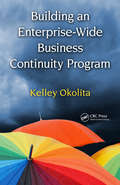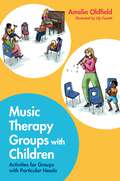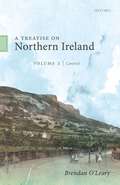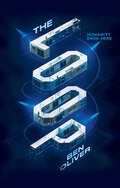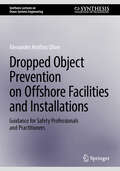- Table View
- List View
D.I.V.E.R.S.I.T.Y.: A Guide to Working with Diversity and Developing Cultural Sensitivity
by Vivian Okeze-TiradoBeing culturally competent in practice is an essential skill for any practitioner working with people. Award-winning social worker and diversity trainer Vivian Okeze-Tirado has developed an applied practice model to help you to increase your understanding of diversity and improve your cultural competency:D - Decide to be a Culturally Sensitive PractitionerI - Invite people to talk about their cultures, values, beliefs, and experiencesV- Value their history, individuality(,) and differencesE- Explore the client's realities, show curiosityR- Reflect upon information and knowledge receivedS- Scrutinise yourselfI -Identify strategies to aid your workT- Train yourself to treat people, children, and families individuallyY- Yield to culturally sensitive practiceEncouraging you to do more than just talk about racism, this simple practice tool provides easily achievable steps and practical guidance to empower you and your colleagues tackle racism and discrimination in practice.
Hierarchical Archimedean Copulas (SpringerBriefs in Applied Statistics and Econometrics)
by Ostap Okhrin Jan GóreckiThis book offers a thorough understanding of Hierarchical Archimedean Copulas (HACs) and their practical applications. It covers the basics of copulas, explores the Archimedean family, and delves into the specifics of HACs, including their fundamental properties. The text also addresses sampling algorithms, HAC parameter estimation, and structure, and highlights temporal models with applications in finance and economics. The final chapter introduces R, MATLAB, and Octave toolboxes for copula modeling, enabling students, researchers, data scientists, and practitioners to model complex dependence structures and make well-informed decisions across various domains.
Building an Enterprise-Wide Business Continuity Program
by Kelley OkolitaIf you had to evacuate from your building right now and were told you couldn't get back in for two weeks, would you know what to do to ensure your business continues to operate? Would your staff? Would every person who works for your organization? Increasing threats to business operations, both natural and man-made, mean a disaster could occur at any time. It is essential that corporations and institutions develop plans to ensure the preservation of business operations and the technology that supports them should risks become reality. Building an Enterprise-Wide Business Continuity Program goes beyond theory to provide planners with actual tools needed to build a continuity program in any enterprise. Drawing on over two decades of experience creating continuity plans and exercising them in real recoveries, including 9/11 and Hurricane Katrina, Master Business Continuity Planner, Kelley Okolita, provides guidance on each step of the process. She details how to validate the plan and supplies time-tested tips for keeping the plan action-ready over the course of time. Disasters can happen anywhere, anytime, and for any number of reasons. However, by proactively planning for such events, smart leaders can prepare their organizations to minimize tragic consequences and readily restore order with confidence in the face of such adversity.
Interactive Music Therapy in Child and Family Psychiatry: Clinical Practice, Research and Teaching
by Amelia OldfieldThis book outlines the rationale for using music therapy in child and family psychiatry. The author reflects on research methodology and describes characteristics of her own approach to therapy, including how to start and end the session, how to motivate children and establish a positive musical dialogue with them, and how to include parents.
Interactive Music Therapy - A Positive Approach: Music Therapy at a Child Development Centre
by Amelia OldfieldAmelia Oldfield explains how her approach to music therapy sessions establishes a constructive musical dialogue with children that emphasises positive experiences - these establish trust and allow feelings to be expressed through music. This practical book will be of use to clinicians and teachers working with children with a variety of needs.
Music Therapy Groups with Children: Activities for Groups with Particular Needs
by Amelia OldfieldFrom the author of Pied Piper, you can create and run succesful music therapy groups for children. With a focus on children with addtional needs, it's complete with 60 activity ideas. Including sheet music and practical guidance on timings, group ruls and collaboration and more, making it essential for your music therapy practice.
Music Therapy with Children and their Families
by Amelia Oldfield Claire FlowerThe contributors describe their approaches to family work with different client groups. Their experiences demonstrate that involving the family in a child's music therapy can be beneficial for everyone, and that it is possible to address relationship issues within the family as part of the treatment.
Songwriting: Methods, Techniques and Clinical Applications for Music Therapy Clinicians, Educators and Students
by Amelia Oldfield Jeanette Tamplin Jeanette Kennelly Lucanne Magill Emma DaviesThis comprehensive and groundbreaking book describes the effective use of songwriting in music therapy with a variety of client populations, from children with cancer and adolescents in secondary school to people with traumatic brain injury and mental health issues. This practical book will prove indispensable to students, therapists and educators.
Flute, Accordion or Clarinet?: Using the Characteristics of Our Instruments in Music Therapy
by Amelia Oldfield Jo Tomlinson Dawn LoombeMusic therapists are trained to use their first study instrument in clinical practice, yet existing literature focuses almost exclusively on the use of piano, basic percussion and voice.This illuminating book brings together international music therapists who use a diverse range of musical instruments in their clinical work: the clarinet, the piano accordion, the flute, the cello, the trumpet and flugelhorn, the bassoon, the violin, the viola, the harp, the guitar, lower brass instruments (the trombone and the euphonium), the oboe, the saxophone and bass instruments (double bass and bass guitar). Each therapist reflects on their relationship with their instrument and the ways in which they use it in therapeutic settings, discussing its advantages and disadvantages in a variety of clinical populations: children and adolescents, adults with learning disabilities, adults with mental health problems and older people.This will be essential reading for any music therapist or student music therapist who uses or is interested in using a musical instrument in their work, and will be of interest to other caring and healthcare professionals, teachers, musicians and carers wanting to learn more about instrumental music therapy.
A Treatise on Northern Ireland, Volume II: Control
by Brendan O'LearyThe second volume of the definitive political history of Northern Ireland. This landmark synthesis of political science and historical institutionalism is a detailed study of antagonistic ethnic majoritarianism. Northern Ireland was coercively created through a contested partition in 1920. Subsequently Great Britain compelled Sinn F?in's leaders to rescind the declaration of an Irish Republic, remain within the British Empire, and grant the Belfast Parliament the right to secede. If it did so, a commission would consider modifying the new border. The outcome, however, was the formation of two insecure regimes, North and South, both of which experienced civil war, while the boundary commission was subverted. In the North a control system organized the new majority behind a dominant party that won all elections to the Belfast parliament until its abolition in 1972. The Ulster Unionist Party successfully disorganized Northern nationalists and Catholics. Bolstered by the 'Specials,' a militia created from the Ulster Volunteer Force, this system displayed a pathological version of the Westminster model of democracy, which may reproduce one-party dominance, and enforce national, ethnic, religious, and cultural discrimination. How the Unionist elite improvised this control regime, and why it collapsed under the impact of a civil rights movement in the 1960s, take center-stage in this second volume of A Treatise on Northern Ireland. The North's trajectory is paired and compared with the Irish Free State's incremental decolonization and restoration of a Republic. Irish state-building, however, took place at the expense of the limited prospect of persuading Ulster Protestants that Irish reunification was in their interests, or consistent with their identities. Northern Ireland was placed under British direct rule in 1972 while counter-insurgency practices applied elsewhere in its diminishing empire were deployed from 1969 with disastrous consequences. On January 1 1973, however, the UK and Ireland joined the then European Economic Community. Many hoped that would help end conflict in and over Northern Ireland. Such hopes were premature. Northern Ireland appeared locked in a stalemate of political violence punctuated by failed political initiatives.
The Loop (The\loop Ser. #1)
by Ben OliverLuka Kane has been inside hi-tech prison the Loop for over two years. A death sentence is hanging over his head but his day-to-day routine is mind-numbingly repetitive. Then everything changes. Soon, Luka has to face a new reality: breaking out of the Loop might be his only chance to save himself – and the world …
What Is Veganism For? (What Is It For?)
by Catherine OliverAcross the world, an increasing number of people are turning to veganism, changing not just their diets, but completely removing animal products from their lives. For some, this is prompted by concerns over animal ethics; for others, it’s a response to the part played by animal agriculture in the climate crisis or an attempt to improve their own health. Catherine Oliver shows why the veganism movement has become a powerful social, political and environmental force, taking an honest look at how we live and eat. She discusses the health and environmental benefits of veganism, explores the practical and social impacts of the shift to eating plants, and explains why veganism is not just a diet, but a way of life.
What Is Veganism For? (What Is It For?)
by Catherine OliverAcross the world, an increasing number of people are turning to veganism, changing not just their diets, but completely removing animal products from their lives. For some, this is prompted by concerns over animal ethics; for others, it’s a response to the part played by animal agriculture in the climate crisis or an attempt to improve their own health. Catherine Oliver shows why the veganism movement has become a powerful social, political and environmental force, taking an honest look at how we live and eat. She discusses the health and environmental benefits of veganism, explores the practical and social impacts of the shift to eating plants, and explains why veganism is not just a diet, but a way of life.
Dear Alzheimer's: A Diary of Living with Dementia
by Keith OliverKeith Oliver was diagnosed with Alzheimer's in 2010, and has since become a leading activist for dementia care, and an international speaker. Telling his story through a diary format, this book gives an unparalleled insight into what day-to-day life with dementia is like, and how he continued to live a full life after diagnosis.
Kindergarten and ASD: How to Get the Best Possible Experience for Your Child
by Margaret OliverKids with ASD take a big leap when they start kindergarten and parents have as much to learn about school expectations and available services. This book will take away the stress of the move to kindergarten, giving parents key information and the "how-to's" to make the transition as smooth as possible and be the best advocates for their child.
Stranded With Her Forbidden Knight
by null Melissa OliverStranded by a storm Caught between duty and forbidden desire! Lady Elowen is travelling to her loveless arranged betrothal when she’s rescued from a storm by Lord Simon Trebarr—the enigmatic knight whose family have long been enemies of her own. She should hate him, yet an unwanted attraction has always simmered whenever he’s near… Within the walls of Simon’s Cornish castle, can Elowen resist experiencing passion before condemning herself to a life without it…even if it’s with the man who should be her enemy?
Vulnerable Children and the Law: International Evidence for Improving Child Welfare, Child Protection and Children's Rights
by Suzanne Oliver Patrick O'Leary Lisa Young James Reid Cathy Humphreys Nicky Stanley Helen Richardon Foster Linda Moore Chaitali Das Christine Beddoe Deena Haydon Gill Thomson Gladis Molina Goos Cardol Greg Kelly Jackie Turton Jason Squire Meredith Kiraly Pam Miller Rawiri Taonui Robert H. George Shelly Whitman Terri Libesman Una ConveryThis book takes an international perspective on child welfare, examining how frameworks can be adapted to address the rights and best interests of children. Synthesising the latest research, experts redefine the concept of a 'child in need' in a world where global movement is common and children are frequently involved in the law.
Supervision as Transformation: A Passion for Learning
by Richard Olivier Mary Creaner Ann Rowe Fiona Adamson Joan Wilmot Judy Ryde Christina Breene Nicola Coombe Dr Michael CarrollSupervision provides a positive space for compassion, inquiry, reflection, and above all development. The chapters in this book are written from a wide range of perspectives, all of which take a practical approach to supervision and show how transformative it can be when approached in the right way.
Decolonizing Journalistic Knowledge: Deliberative Communication in Central and Eastern EU Member States (Edition Medienwissenschaft #113)
by Martín Oller AlonsoIn the EU, the prevailing academic and scientific thought models, as well as communication processes and journalism, are deeply Eurocentric. Martín Oller Alonso critiques these structural issues, focusing on post-communist Central and Eastern Europe's recent EU members. He argues for a decolonization of knowledge and a journalistic-other approach, blending local sensibilities and collective imaginations. Emphasizing deliberative communication, his study offers fresh media and communication theory perspectives, relevant to professionals and researchers in various fields, addressing the challenges and opportunities in the European Union amidst globalization and cultural integration.
Culture Wars in American Education: Past and Present Struggles Over the Symbolic Order (Critical Social Thought)
by Michael R. OlneckCulture Wars in American Education: Past and Present Struggles Over the Symbolic Order radically questions norms and values held within US Education and analyses why and how culture wars in American education are intense, consequential, and recurrent.Applying the concept of “symbolic order,” this volume elaborates ways in which symbolic representations are used to draw boundaries, allocate status, and legitimate the exercise of authority and power within American schooling. In particular, the book illustrates the “terms of inclusion” by which full membership in the national community is defined, limited, and contested. It suggests that repetitive patterns in the symbolic order, for example, the persistence of the representation of an individualistic basis of American society and polity, constrain the reach of progressive change. The book examines the World War I era Americanization movement, the World War II era Intercultural Education movement, the late-twentieth-century Multicultural Education movement, continuing right-wing assaults on Ethnic Studies and Critical Race Theory in the first decades of the twenty-first century, and historical and contemporary conflicts over the incorporation of languages other than Standard English into approved instructional approaches.In the context of continuing culture wars in the United States and across the globe, this book will be of interest to graduate students and scholars in critical studies of education, history of education, sociology of education, curriculum theory, Multicultural Education, and comparative education, as well as to educators enmeshed in contemporary tensions and conflicts.
Culture Wars in American Education: Past and Present Struggles Over the Symbolic Order (Critical Social Thought)
by Michael R. OlneckCulture Wars in American Education: Past and Present Struggles Over the Symbolic Order radically questions norms and values held within US Education and analyses why and how culture wars in American education are intense, consequential, and recurrent.Applying the concept of “symbolic order,” this volume elaborates ways in which symbolic representations are used to draw boundaries, allocate status, and legitimate the exercise of authority and power within American schooling. In particular, the book illustrates the “terms of inclusion” by which full membership in the national community is defined, limited, and contested. It suggests that repetitive patterns in the symbolic order, for example, the persistence of the representation of an individualistic basis of American society and polity, constrain the reach of progressive change. The book examines the World War I era Americanization movement, the World War II era Intercultural Education movement, the late-twentieth-century Multicultural Education movement, continuing right-wing assaults on Ethnic Studies and Critical Race Theory in the first decades of the twenty-first century, and historical and contemporary conflicts over the incorporation of languages other than Standard English into approved instructional approaches.In the context of continuing culture wars in the United States and across the globe, this book will be of interest to graduate students and scholars in critical studies of education, history of education, sociology of education, curriculum theory, Multicultural Education, and comparative education, as well as to educators enmeshed in contemporary tensions and conflicts.
Safety Culture and Leading Indicators for Safety in the Maritime and Offshore Environment (Springer Series on Naval Architecture, Marine Engineering, Shipbuilding and Shipping #20)
by Alexander OlsenThis book provides guidance and insight into the development process for safety indicators to comply with general classification rule requirements. The utilisation of this guidance will provide tangible benefits as the marine and offshore industry is able to realise the positive results of tangible safety indicators that are developed correctly and managed appropriately throughout the lifecycle of the vessel or platform. In the marine and offshore industry, design and equipment configurations vary from one system to the next, and systems are in many cases increasingly complex. There are gaps in codes and standards which may lag technological innovations and there are issues related to interfaces between systems. Safety indictors such as risk analyses, FMEA, job safety analyses, management of change procedures, HSQE, technical manuals and reliability-based maintenance provide a formalised approach to identify hazardous situations, address the gaps and interconnection variances, and improve safety, environmental performance and operational downtime. The majority of Classification Societies (‘Class’) require their clients to develop and submit safety indicators as part of the classification requirements for certain systems and to obtain certain special notations.
Applying Physical Ergonomics to Modern Ship Design
by Alexander Arnfinn OlsenThis book combines and summarizes the myriad rules, regulations, guidance, and guidelines that pertain to the human factor element of vessel design and marine operations. With a focus on physical ergonomics, the book is thoroughly researched and draws on the most current Class rules and industry regulations promulgated by the IMO and other organizations. As such, this book serves as a single point of reference for professionals and students involved in human factors and ergonomics at sea.
Dropped Object Prevention on Offshore Facilities and Installations: Guidance for Safety Professionals and Practitioners (Synthesis Lectures on Ocean Systems Engineering)
by Alexander Arnfinn OlsenThe prevention of dropped objects is an important component of safeguarding personnel, property and the maritime environment. This concise book has been developed to provide safety professionals and practitioners with specific guidance and criteria on the development, implementation and management of dropped object prevention programs which corresponds to a growing industry-wide development to mitigate and eliminate the hazards imposed by dropped objects. This book relates to the Class requirements for an onboard dropped object prevention program to be implemented on offshore assets, and provides the design requirements for equipment primary securing, secondary retention methods and securing for specific equipment, etc. This book is intended for use by offshore installation Owners, Operators, and Companies whose intention is to prepare for, and ultimately apply for optional Class notations highlighting the installation’s compliance with dropped object safety management. For the benefit of context, the book uses the provisions which relate specifically to the DOPP and DOPP+ notations.
Ballast Water Treatment and Exchange for Ships (Synthesis Lectures on Ocean Systems Engineering)
by Alexander Olsen Pamela Rossi CiampoliniThe inadvertent transfer of harmful aquatic organisms and pathogens in the ballast water of ships has been determined to have caused a significant adverse impact to many of the world's coastal regions. The international maritime community, under the auspices of the IMO has developed several documents, including the “International Conventions for the Control and Management of Ship's Ballast Water and Sediments, 2004”, (Ballast Water Management Convention), which are aimed at preventing the introduction of unwanted aquatic organisms and pathogens through the discharge of ballast water and sediments. The Ballast Water Management Convention applies to vessels registered in a country which is party to the Convention and to those vessels registered in other countries when operating in the waters of a country which is party to the Convention. As a means to prevent, minimize and ultimately eliminate the risk to the environment, human health, property and resources arising from the transferof harmful aquatic organisms and pathogens through the control and management of vessel's ballast water and sediment, as well as to avoid unwanted side-effects from that control, the Convention requires vessels to conduct a ballast water exchange or be fitted with an approved ballast water management system. It is noted that several studies have shown that the effectiveness of ballast water exchange varies and is dependent on the vessel type (design), exchange method (sequential, flow-through and dilution methods), ballasting system configuration, exchange location, weather conditions and vessel's trading pattern. For these reasons (and others), it has been determined that ballast water exchange does not provide adequate protective measures to prevent damage from organisms and pathogens carried in a vessel's ballast, even though exchange was considered to be acceptable as an interim solution.This book includes updates for the clarification of Survey requirements and adds the definition of biological commissioning, testing as well as requirements for Class approved Service Providers to conduct biological commissioning testing. Moreover, this book includes updates due to the adoption of the requirements from IACS UR M74, Rev. 2 and UR F45 and is applicable for existing ships, where an application for approval for the plans of BWMS is made on or after 1 July 2022; or for new ships contracted for construction on or after 1 July 2022.


